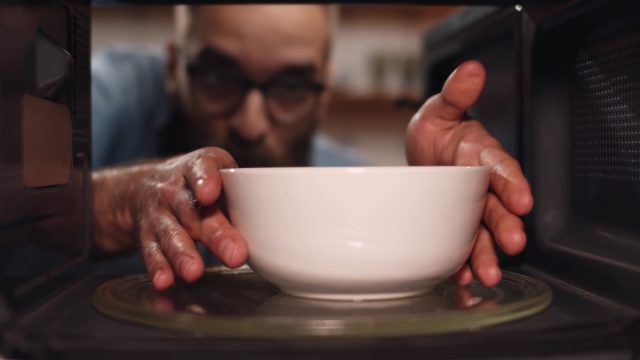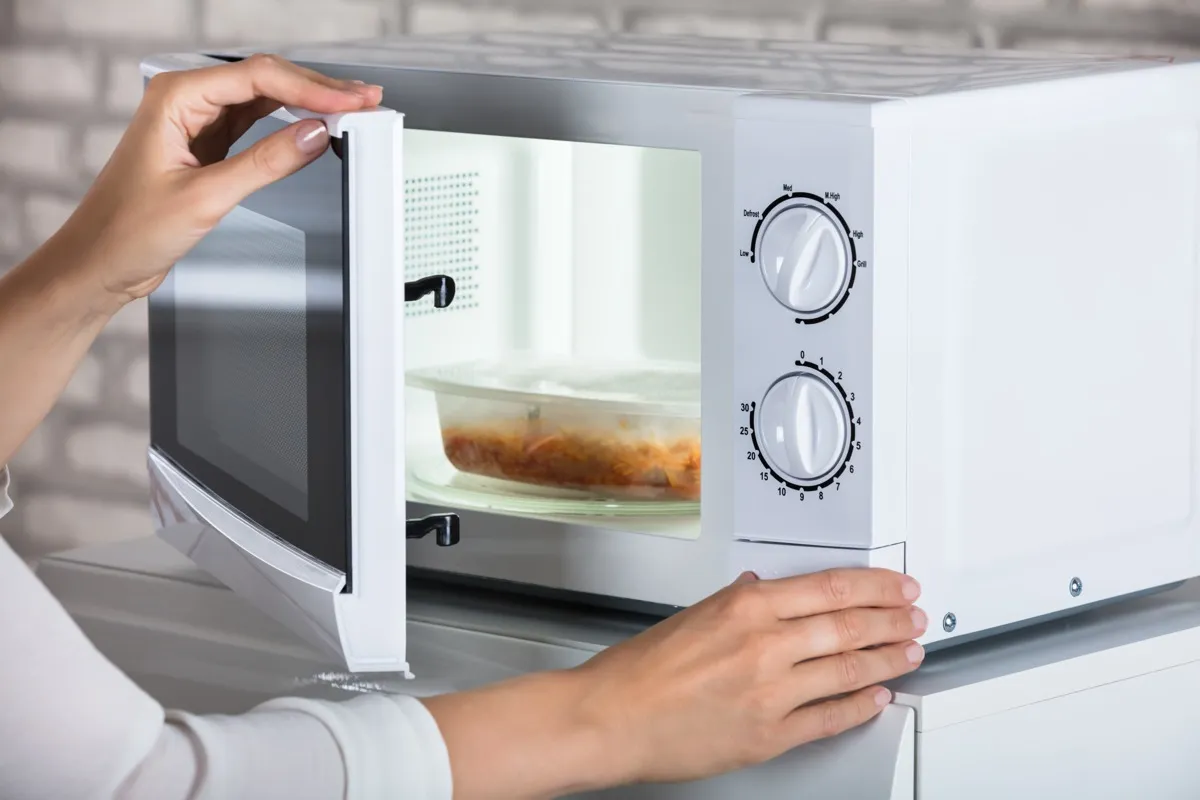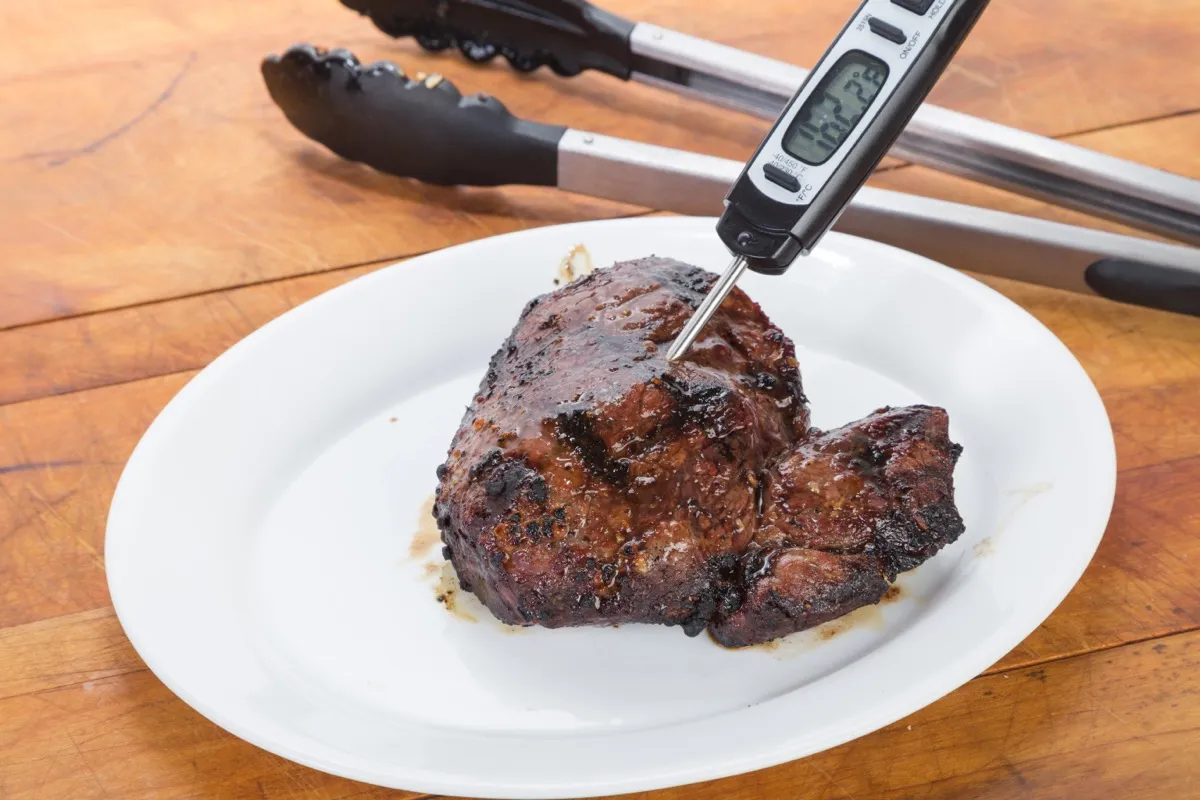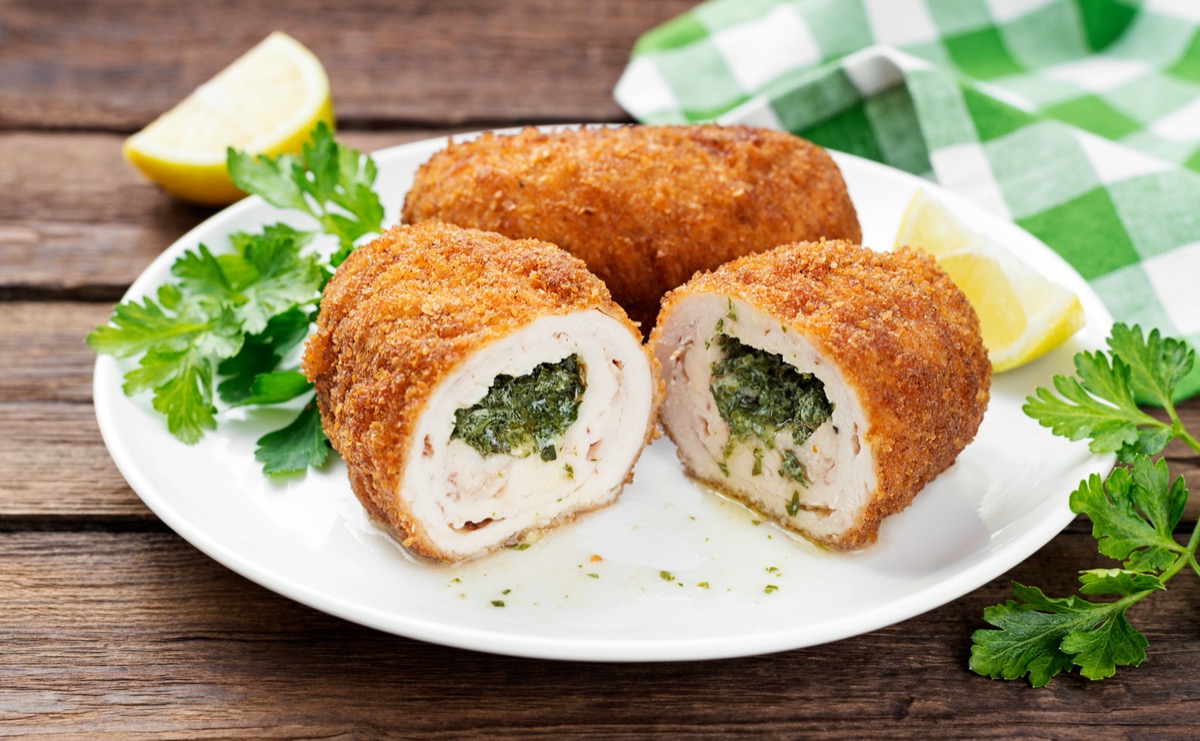Never Eat Microwaved Food Before Doing This, FDA Warns

Microwaves are an undeniably convenient way to prepare food. In mere seconds, you can take a cold bowl of leftovers and turn it into a gourmet meal once again or turn ingredients from your fridge into something new and delicious. However, while nuking your food may save you time, making food in the microwave isn’t a risk-free endeavor. Before you prepare your next meal, read on to discover the one crucial mistake experts from the U.S. Food & Drug Administration (FDA) say you should never make when microwaving food.
RELATED: The One Question You Should Always Ask Your Server Before Ordering, CDC Says.
If you’re cooking food in a microwave, make sure to let it stand before eating it.

If you’re preparing your food in a microwave, it’s important to stir your food throughout the cooking process to ensure that heat is being evenly distributed to ensure even cooking, according to the FDA. The FDA also notes that if your microwave doesn’t have a turntable, it’s essential that you turn your food manually to make sure it’s being cooked all the way through.
However, even more important is taking time to let your food “stand,” or allow it to remain undisturbed in the microwave for a few minutes after the microwave timer has finished. The FDA notes that standing time completes the cooking process for microwaved foods; if food is not allowed to stand prior to being consumed, it may not be completely cooked through.
For the latest food safety news delivered straight to your inbox, sign up for our daily newsletter!
Not allowing for standing time could make you sick.

The amount of standing time required depends on the type of food you’re microwaving. According to the United States Department of Agriculture’s Food Safety and Inspection Service (FSIS), foods like bread, fruits, and small vegetables are less dense and thus require less standing time, while foods like meat are denser and require longer periods of standing time. Before you consume any food you’ve microwaved, make sure you’re adhering to the recommended standing time on the package. When in doubt, allow food to stand for at least three minutes, the FSIS recommends.
Not allowing adequate standing time could lead to serious illness if you’re not careful. According to a report published in the Centers for Disease Control and Prevention (CDC) journal Morbidity and Mortality Weekly Report (MMWR), a 2010 outbreak of Salmonella enterica serotype Chester was associated with consumption of frozen microwaved meals. “Not all of the persons with Salmonella Chester infection who were interviewed reported allowing their meal to stand for the time recommended in the cooking instructions before eating; microwave standing time is part of the cooking process,” the CDC reported at the time.
Once your food has completed its standing time, check its temperature.

While standing is an important part of the microwave cooking process, that’s not the only thing you should do to ensure that your food is cooked to an appropriate temperature.
The FSIS notes that you should take the internal temperature of your microwaved dish with a food thermometer after it’s been allowed to stand and prior to eating it. Fish should be cooked to 145 degrees Fahrenheit; raw beef, pork, lamb and veal steaks, chops, and roasts should be cooked to at least 145 degrees Fahrenheit; ground meats, eggs, and casseroles containing eggs should be cooked to 160 degrees Fahrenheit; and poultry should be cooked to a minimum of 165 degrees Fahrenheit. Leftover food of any type should reach 165 degrees and be allowed to stand before being consumed.
Certain foods shouldn’t be microwaved at all.

While a wide variety of foods can be safely microwaved, that’s not true of every dish.
The FSIS specifically warns that stuffed poultry products may not be safe to eat if prepared in a microwave. “Because food cooks so quickly in a microwave oven, the stuffing might not have enough time to reach the temperature needed to destroy harmful bacteria,” the authority explains.
RELATED: If You’re Over 65, Avoid This One Type of Meat, Experts Say.